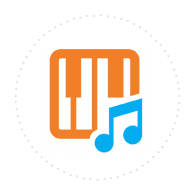Musika Quick Stats
23 Years
Since We Started
41,456+
Happy Customers
10,769
Cities with Students
3,123
Teachers in Network
Lesson Special - Up to 20% OFF! Get Started Now with a Risk-Free Trial!
Here are just a few of the many teachers offering Violin lessons in San Antonio . Whether you are looking for beginner guitar lessons for your kids, or are an adult wanting to improve your skills, the instructors in our network are ready to help you now!
Instruments: Piano Violin Cello Viola Music Keyboard
Post Baccalaureate Educator looking to provide guidance to musicians on their great musical journey. My degree is in Violin and Piano Performance. I studied with professors that graduated from Eastman, Manhattan, Michigan, Boston, and Curtis among many others. Ive always been interested in discovering the many ways one could teach an instrument. After learning piano from the age of 5 I started violin around 10 years old. I come from a family of non-musicians so my situation was quite special in the way I pursued music without the influence of family or friends. Read More
Instruments: Piano Guitar Violin Viola Ukulele Fiddle Classical Guitar Acoustic Guitar
I began teaching music in my college days. I was a music director in the public schools. I have been consistently teaching music in my home studio for the past 11 years. I am passionate about being a teacher and teaching students of all ages. I enjoy teaching classical music because it is a firm foundation for all other genres of music. If one can play classical, they can play anything. Read More
Instruments: Piano Violin Cello Viola
I have various methods. Really it depends on age when it comes to piano. 4-5 year olds I use Music For Little Mozarts or the Alfred Series. When teaching violin, viola, and cello I use Essential Elements for Strings and also the Suzuki books Read More
Instruments: Violin Viola Recorder Fiddle
My goal is for students to love playing their instrument so much after every lesson that they are motivated to keep working on concepts outside of their lesson time. Thus far, all of my private lesson students practice outside of their lessons, and I hope to keep it that way! I believe that all students are capable of learning music regardless of preconceived notions about talent level. I understand that people have busy schedules, but I expect them to make some time to practice outside of lessons even if it is only for 10 or 20 minutes per day. Read More
Instruments: Violin
I'm a pasionate and hard working violinist and teacher who is always striving for the best from myself and my students. I am currently in the second year of my Masters in Violin Performance at Texas State University. In addition to my scholarly duties, I am also a member of the Graduate String quartet at Texas State. Chamber music is a passion of mine and it is my hope that each of my students will find something that they can be passionate about. Read More
Instruments: Violin Cello Viola Double Bass
There are usually two reasons for taking private lessons. Either an individual has expressed an interest for the instrument or a parent wishes for their child to have a musical experience. Whichever the case may be, I see lessons as an opportunity to open a window into creativity and expression. Depending upon the age of the student, my approach is very different. For students of ages 5-12, I evaluate their learning processes and their comfort in analyzing patterns and symbols. Read More
Instruments: Piano Violin Trumpet Trombone Saxophone Flute Clarinet Drums Synthesizer Recorder Electric Violin Fiddle Orchestral Percussion Music Keyboard
What do you think is the hardest thing to master on your instrument?
As a saxophonist of over 27 years now, I have achieved everything I have sought out for (thus far). Humbly, I must also say that as far as I have come, I'm still learning to play the saxophone in terms of there being a lot more work to do to continue to learn new techniques in order to improve.
During my first few years, it was mostly about learning to play music that everyone knows and also applying ideas of my own plus influences from other musical works during performances outside of the regular school band scene. Yes, I focuses on intonation, breath control, dynamics, accuracy of rhythm and pitch, steady tempo, scales in all keys, and paying close attention to articulations, etc. but I also chose to play what was in my heart.
In high school, I learned how to functionally use the altissimo register, along with other techniques (e.g., flutter-tongue, growl, etc.) In college, I finally mastered the circular breathing technique and not only do I employ in on the saxophone, but also on the clarinet and even the oboe. I find this particular technique most useful when sight-reading through fast-tempo music that has little to no rests in which to take a normal breath, so instead of breaking up the continuity of sound during these passages, I am comfortably able to perform all of the material that the piece warrants and supply my lungs with much needed oxygen as I proceed.
Do you use specific teaching methods or books? (Ex: Alfred, Bastion, Suzuki, Hal Leonard) Why did you choose them if you did?
Depending on the instrument, I refer to a variety of methods books and other sources...no one book is going to provide you with a 'comprehensive' approach to all things on your instrument--that's what lessons are for! Years ago, I went through book level 1 (beginner), level 2 (intermediate), and level 3 (advanced) from different publishers and for each book and for each level of that book, I compiled (in chronological order) numerous excerpts and put them into Finale software. By doing so, I'm then able to format their appearance however I prefer (e.g., AlphaNotes, beat numbers or sticking for drummers as 'lyrics' under each note, enlarged staff and note size as well as increased spacing between staves and number of systems on each page; special fonts, etc.) I then can quickly transpose to any other instrument, save, print, or e-mail, etc. I prefer not to copy pages out of books!
I started on the Ed Sueta Band Methods books myself (ca, 1990-1992), and when I first started teaching in NJ everyone was using Bruce Pearson's Standard of Excellence books; here in TX everyone uses Essential Elements. They all have similar songs in a logical order, only the layout is different. I sometimes pull from Rubank or Premier Performance. For violin, I recommend All For Strings (and get the accompanying theory workbook, too). For piano, I mostly use Keys to Successful Piano Performance (by William Workinger and Ed Sueta). For drums, I also use: Stick Control for the Snare Drummer, Progressive Steps to Syncopation (by Ted Reed), and Joel Rothman's Mini-Monster Book of Rock Drumming.
FYI: All exercises for warm-up purposes (to build and maintain skills) are created by me using Finale for each instrument. I've copyrighted my own material which begins each lesson I teach. If there is a physical muscle or theory skill required in the music, then custom-tailored by both skill level and instrument I have an exercise to combat that!
23 Years
Since We Started
41,456+
Happy Customers
10,769
Cities with Students
3,123
Teachers in Network
Trusted as the industry leader, for over 21 years the teachers in our network have been providing Violin lessons in San Antonio to students of all ages and abilities.
We'll then reach out to the teachers for you.
Schedule the risk-free trial lesson directly with the teacher.
Continue with that teacher or try someone else.







